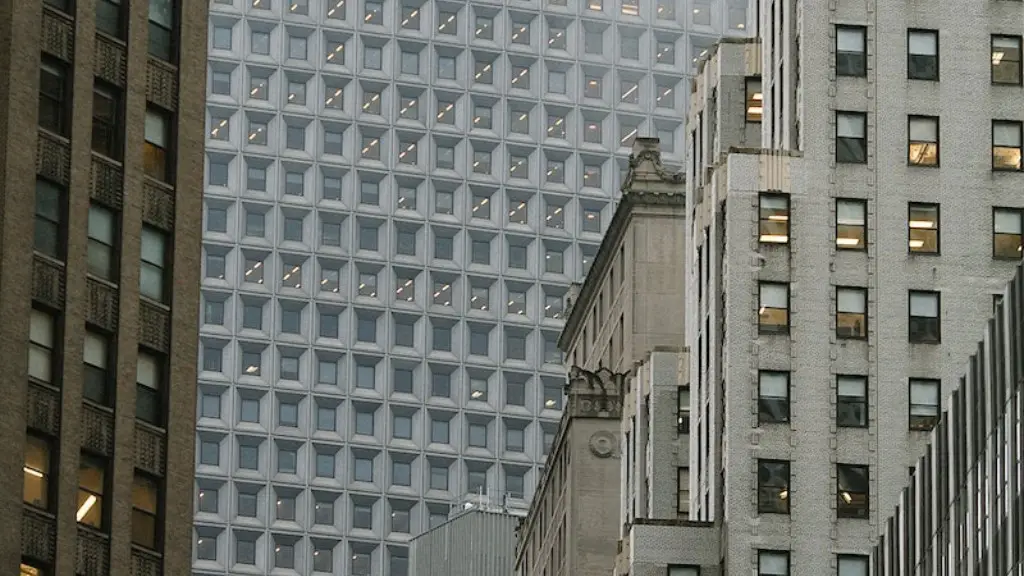An architectural tender is a type of proposal that businesses submit in order to secure contracts to design and construct buildings or projects. A tender is an invitation that allows firms to bid on a project by putting forward their detailed proposal, methodology and timeline. The tender is the most important part of the building process – it is used to determine the best candidate for the job and is often the most lucrative part of becoming a professional architect.
The aim of the tender is to provide a fair and transparent system when selecting a candidate to design or construct a project. Every tender should be unique and demonstrate the qualities, skills and experience of an architectural firm to ensure it stands out from the rest. Another aim of the tender is to provide an evidence-based assessment of a firm’s capability with regard to cost, programme, method of construction and quality.
Tenders need to be presented in an easy-to-understand format, discussed in detail with specific details, and have descriptions of materials to be used clearly explained. Other sections should also be included such as the costs and timeline of the project, as well as the method of construction. If a tender is not maintained by the firms, it can easily become a matter of dispute which will only slow the entire project down further.
In order to ensure a strong tender, architects should research thoroughly and make sure it fits the needs of the project. A professional and experienced architect should always be up to date with the latest technology and building materials to ensure the tender stands out from the rest. They should also thoroughly consider how to reduce construction cost as well as programme risks that may arise during construction.
Meticulous planning is extremely essential for winning a tender – there should be an established plan in place for managing the entire project. A successful architect should also have strong communication skills with clients and business partners to ensure a smooth progression of the project and keep everyone well informed.
Above all, the process of tender is a serious contract, legally binding business document. Architectural firms must make sure they understand the clause and avoid potential legal risks which can be very costly. To reduce these risks, contracts should be reviewed frequently and follow the right protocols when working with public or private sector bodies. Finally, a successful architect must take ownership of the projects they oversee and deliver results through creativity and innovation.
Methodology Of Construction
An important component of the tender process is detailing the accurate method of construction. This involves the selection of materials, methods, and techniques used to ensure the building is safe and structurally sound. Architects should always consider the longevity and sustainability of materials used to ensure the construction is efficient in the long run. Additionally, architects should always familiarize themselves with the national and local standards that may influence the need for modifications.
In addition, architects should understand the foundations that a project requires and how the structure should comply with the local environment. Architects should also be aware of the types of materials and their sourcing, as some may have an environmental impact. All relevant authority needs to be consulted throughout the tender process to ensure only the most sustainable materials are used.
To ensure project excellence, architects must invest a great deal of time and effort in constructing, simulating, testing and troubleshooting the project. If architects manage to provide proof of appropriate sound engineering practices, public confidence in the safety and efficacy of the project will be improved.
Another important factor to consider is the potential risks that may arise during construction. Architects should look out for common risks such as tight timelines, delay of programme, and material shortage. They should also document these risks properly and provide contingency plans to ensure the project remains on track despite any unexpected delays.
Cost Control and Cost Risk Analysis
Cost control is an essential part of the tender process as firms must ensure their bids are competitive and affordable to suite the client’s budget. Architects should keep all costs in-check throughout the whole timeline of the project and ensure all payments are made on time. They should also consider hidden costs such as maintenance, staffing, and other ancillary services.
It is recommended that architects use their own internal measures to conduct cost risk analyses in order to anticipate any potential costs or delays. firms should also calculate the project rates and labour costs beforehand to ensure all forecasted prices correspond with the current market. Additionally, it is recommended that architects calculate the overall duration of a project separately to the physical timescale it takes to complete it.
Architects should also consider resource availability, health and safety measures, project quality, programme management and many other important aspects when controlling a project’s cost. The most effective way for architects to manage the cost of a project is to negotiate good terms with the suppliers and contractors, and to accurately estimate the total amount of materials that would be used.
Materials and Finishes
When selecting the finished materials of a project, architects should consider how sustainable the materials are as well as how it may affect its environment. Therefore, architects should pick materials that could be reused, recycled or compostable to ensure the project is correctly presented to the public.
In addition, architects should select suitable materials that would add value to the project. This includes fittings and fixtures, such as windows, doors, flooring and lighting. All materials should complement each other in harmony, and each part should be carefully selected to add visual appeal to the project.
The chosen materials should remain in good condition even after years of usage, and should be easy to clean and maintain. Architects should always thoroughly research the lifespan of each material to ensure the project can be enjoyed for many years. They should also avoid using materials which may require a lot of ongoing maintenance, as this will increase the cost in the long run.
Apart from selecting suitable materials, architects should also consider the regulations of the country that the project is being built in. Architects should always keep in mind the environmental impact of the materials they select and adhere to local regulations to ensure they are in line with the law.
Programme and Timeline Management
One of the most important aspects of a tendered project is to track and follow the programme and timeline of the construction. Architects should always create extensive plans of the project and review them regularly to ensure their team can stay on track. This includes setting out clear timescales with specific milestones for every aspect of the project and tracking the overall progress of each task.
By creating schedules and realistic timelines, architects can better allocate limited resources to maximise output. The team should always stay in contact with the client to report back on the project’s progression and ensure that it is delivered on time. Architects should also provide regular updates on the current situation of the project in order to keep all stakeholders informed.
In order to protect the project from potential disruptions, it is important for architects to consult various sources such as the supply chain and local utilities to determine any potential risks that could slow down the completion of the project. Regular meetings should be held to discuss potential risks and agree on a timeline with the client in order to ensure that it is completed on time and on budget.
Project Quality Assurance
The overall quality of the project is the most important factor that clients consider when selecting the right contractor. Architects must document and produce evidence of their capabilities to prove that they’re able to deliver high quality results and meet the requirements stated in the tender.
Architects need to compare and assess different methodologies when selecting the construction team. This involves understanding the various techniques used to build a structure, as well as selecting qualified personnel that are capable of delivering excellent results. Architects should also ensure that the construction process follows all safety regulations that are required to ensure the safety of building occupants.
Pre-construction audits are also a vital part of the process as it allows architects to identify and address any potential issues that may cause problems during the construction, such as environmental impacts and inadequate materials. Regular project reviews should be carried out to ensure that the project remains on track and is delivered on time. Finally, architects should assess the overall construction performance, building quality and satisfaction of the client.
Final Inspection and Client Satisfaction
Once the project has been completed, an inspection should be conducted to ensure the building meets the stated requirements. This should include the testing of quality and safety standards, as well as the assessment of the effectiveness of preventive and corrective actions implemented.
Establishing a handover procedure is also essential, as it helps demonstrate the capabilities of the architect and dictate any events that occur in the event of a dispute. Following the completion of the construction, architects should always provide a satisfactory level of service to their clients, as client satisfaction is key to winning more tenders in the future.
Regular follow ups should be done in order to determine the client’s level of satisfaction with the construction process and the end result. This can help architects diagnose and rectify any issues that may have been overlooked during the process. Additionally, referrals can be gained to help increase the chances of winning future tenders.
Environmental Considerations
When constructing a project, architects should always consider the environmental impact of their decisions. This may include the selection of materials, the overall energy requirements, and any other factors that may cause harm to the environment. This requires architects to conduct thorough research to assess and determine the carbon footprint of their projects.
Architects should look for ways to reduce waste, conserve energy, and select materials that minimise the damage to the environment. Architects must also make sure to select materials that are energy efficient and can limit the need for ongoing maintenance. Architects should also consider the potential impact that the construction may have on the local community and wildlife in order to make sure that the project would not cause any harm to the environment.
At the same time, architects should consider investing in renewable energy sources, as this can make the building more sustainable in the long run. Finally, architects should adopt a green lifestyle by educating and motivating their team to take actions that can help reduce their own footprint.





